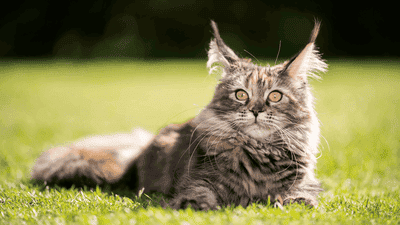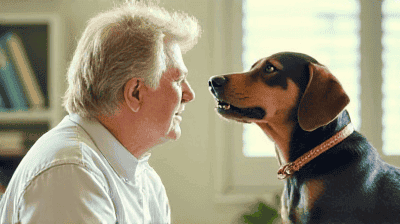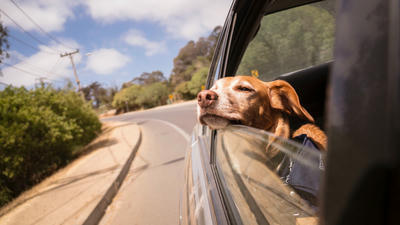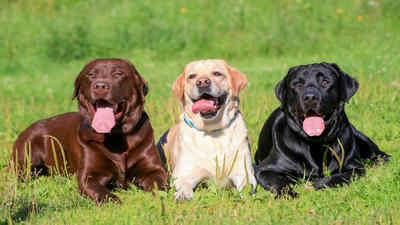Urban Pet Life: Tips for Raising a Happy Pet in the City

Living in a bustling city can present unique challenges and opportunities for pet owners. From limited space to busy streets, urban environments require thoughtful planning and consideration to ensure that pets thrive. However, with the right approach, city life can be rich and fulfilling for both pets and their owners.
The Urban Environment: Assessing Your Living Space
Choosing the Right Pet for City Living
Not all pets fit well into an urban lifestyle. Before bringing a new pet into your home, consider the following:
- Size of Your Living Space: Evaluate your living space in terms of size and layout. Smaller apartments may be better suited for smaller dog breeds or cats rather than large, active dogs that require extensive space.
- Activity Level: Choose a pet whose energy levels match the dynamics of city life. High-energy pets will need more time outdoors or engaging activities to prevent boredom.
- Noise Sensitivity: Some pets are more sensitive to noise and activity than others. Consider quieter breeds for noisy urban environments, and make sure your pet can adapt to sounds like sirens, construction, and bustling streets.
Understanding Your Living Space
- Assess Outdoor Access: Consider how accessible parks or green spaces are to your home. Proximity to dog parks or walking paths can make a significant difference in your pet's happiness and exercise routine.
- Look for Pet-Friendly Amenities: When renting or buying in the city, seek out pet-friendly buildings that may offer amenities such as dog washing stations, pet parks, or nearby veterinary services.
Ensuring Adequate Exercise and Mental Stimulation
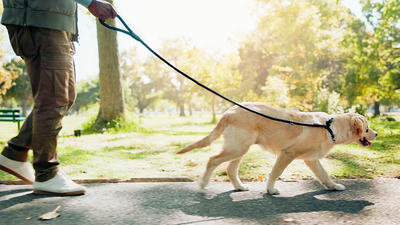
1. Daily Walks
Daily walks are essential for urban pets. Here are some strategies to keep your pet engaged:
- Create a Routine: Establish a consistent walking schedule that provides your pet with physical exercise and mental stimulation. Consistency is key for pets to feel secure in their routine.
- Explore Different Routes: Vary your walking routes to keep things interesting. Notice the sights, sounds, and attractions in your neighborhood while providing different smells and experiences for your pet.
- Utilize Pet-Friendly Parks: Map out local parks and dog parks where you can allow your pet to socialize and play off-leash.
2. Engaging in Playtime
Incorporate playtime into your daily routine at home. Some ideas include:
- Interactive Toys: Invest in high-quality interactive toys that challenge your pet mentally. Puzzle toys, treat dispensers, and engage your pet during inclement weather or after a long day.
- Indoor Games: Create space for indoor games such as fetch using lightweight balls or soft toys. Cats can enjoy climbing trees or interactive laser pointers.
3. Socialization Opportunities
City living provides plenty of opportunities for socialization. Consider the following tips:
- Dog Daycare: Enroll your dog in a reputable daycare where they can interact with other dogs, keeping them socialized and stimulated during the day.
- Meetup Groups: Join local pet groups on social media to connect with other pet owners, participate in organized gatherings, and engage with pets of similar temperaments.
Managing Urban Challenges
1. Noise and Distractions
Urban environments can be noisy and distracting for pets. Here are strategies to help them adjust:
- Desensitization: Gradually introduce your pet to common city noises in a controlled manner. Play recordings of city sounds at a low volume to help them acclimate to the environment gradually.
- Safe Spaces: Create a quiet corner in your home with their bedding and toys, where they can retreat to escape noise and distractions.
2. Space Limitations
Limited living space is a common challenge for urban pet owners. Consider these solutions:
- Vertical Space: Use vertical space to your advantage, especially for cats. Cat trees, shelves, or hanging hammocks can provide stimulation without taking up floor space.
- Designate Zones: Create areas that are specifically designed for your pet’s activities. Having a corner for their toys, food, and sleeping area can help keep the living area organized.
Training and Behavioral Management
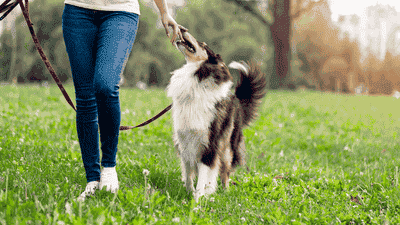
Training is crucial for urban pets to ensure they adapt well to their environment. Here are effective strategies:
1. Basic Commands
Teach your pet essential commands such as sit, stay, and come. Training benefits pets in high-stimulation areas. Consider these tips:
- Short and Positive Sessions: Keep training sessions shorter to maintain your pet's attention, while ensuring they are filled with positive reinforcement.
- Consistency is Key: Use consistent language and cues during training, reinforcing positive behavior with treats or praise.
2. Leash Training
Leash training is vital in urban settings to ensure safety. Some tips include:
- Choose the Right Gear: Invest in a sturdy leash and comfortable harness for better control. Harnesses are especially important for smaller breeds to help prevent injury from pulling.
- Practice Loose Leash Walking: Teach your dog to walk on a loose leash—this reduces pulling and creates a better experience for both of you.
3. Behavioral Enrichment
Engage your pet’s mind and prevent behavioral issues through enrichment activities:
- Training Games: Incorporate training into play by practicing commands amidst distractions. Hide treats around your home or in the yard for them to find.
- Interactive Classes: Consider enrolling in training classes or agility courses, which provide additional mental and physical stimulation while building a bond with you.
Nutrition for Urban Pets
Maintaining your pet's health is essential, and urban environments may offer unique challenges. Take these steps to ensure good nutrition:
1. Choosing Quality Food
- Research Brands: Invest time to research high-quality pet food that meets your pet's dietary needs. Look for brands that focus on natural ingredients.
- Consult a Veterinarian: Your veterinarian can provide recommendations based on your pet’s specific health needs.
2. Convenient Feeding Solutions
Urban living may necessitate finding convenient solutions for feeding your pets. Consider these options:
- Automatic Feeders: Invest in automatic feeders that dispense food at scheduled times, allowing flexibility regarding your pet's feeding routine when you are busy.
- Meal Prep: If time allows, prepare meals in advance, using pet-safe ingredients to facilitate healthier eating habits.
3. Hydration
In hot urban environments, keeping your pet hydrated is crucial:
- Access to Fresh Water: Ensure your pet has constant access to clean, fresh water. Use water bowls that are stable and resistant to tipping.
- Portable Water Bottles: Carry portable water bottles and bowls during outings, especially on warm days, to keep your pet hydrated.
Creating a Comfortable Living Environment
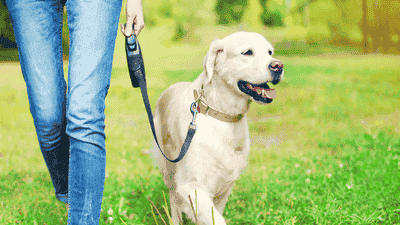
1. Pet-Safe Décor
Incorporating pet-friendly decor can help maintain a stylish and functional living space:
- Choose Pet-Friendly Fabrics: Invest in upholstery that is durable and easy to clean, such as stain-resistant fabrics or leather that hold up well against scratches.
- Use Non-Toxic Plants: Decorate with plants that are non-toxic to pets, ensuring a safe environment while enhancing aesthetics.
2. Pet Supplies Organization
Designed solutions for pet supplies can enhance your living space:
- Smart Storage Solutions: Use stylish storage bins to organize food, toys, leashes, and grooming supplies, keeping your area clutter-free.
- Cozy Pet Zones: Design comfortable spots, like cushioned beds or pet blankets, in various corners of your home, providing a personal retreat for your pet.
Traveling with Your Urban Pet
Traveling in urban areas with your pet can sometimes be challenging. Here are strategies for successful outings:
1. Public Transport Readiness
If you plan to travel using public transport, familiarize your pets with the process:
- Use a Secure Carrier: Invest in a sturdy, comfortable carrier for your pet when using public transit. Ensure it complies with transit guidelines.
- Practice Short Trips: Start with short trips on public transport, allowing your pet to get used to the movement and sounds.
2. Traveling by Car
When traveling by car, safety should remain a priority:
- Use Pet Safety Restraints: Ensure your pet is secure in the vehicle using harnesses or crates designed for pet travel.
- Plan Breaks: When traveling long distances, schedule regular breaks to allow your pet to stretch, hydrate, and relieve themselves.
3. Vacation Planning
If you plan to travel, ensure that accommodations are pet-friendly:
- Research Pet Policies: Look for hotels, vacation rentals, or campsites with clear pet policies. Ensure they accommodate your specific pet's needs.
- Pack Essential Supplies: Don’t forget to pack your pet's essentials, including food, water, bowls, bedding, leash, and favorite toys to keep them comfortable and entertained.
Socializing Your Urban Pet
Socialization is essential for pets living in the city. Here’s how to help them flourish in a bustling environment:
1. Exposure to New Experiences
Expose your pet to various experiences to build their confidence:
- Introduce New People and Pets: Help your dog meet new friends by visiting dog parks or arranging playdates with other pets.
- Attend Events: Look for pet-friendly events in your area, such as fairs or festivals, that allow pets to interact with different people and environments.
2. Positive reinforcement
Utilize positive reinforcement to create positive associations with new experiences:
- Use Treats and Praise: Reward your pet with treats and praise during socialization efforts, reinforcing desired behaviors when they are calm and happy.
- Gradual Exposure: Slowly introduce your pet to new sounds, objects, and experiences. If they exhibit anxiety, take a step back and provide more opportunities for gradual exposure.
3. Group Classes
Sign up for group classes such as obedience training, agility, or scent detection classes:
- Enriching Experiences: Group classes provide opportunities for socialization while teaching essential skills. They are also an excellent way to bond with your pet.
- Build Community: Engage with fellow pet owners through group classes, creating a supportive community of dog lovers.
Preparing for Urban Challenges
1. Managing Pet Anxiety
City life can be overwhelming for pets. Here are some strategies to help manage anxiety:
- Create a Calming Environment: Utilize calming products such as pheromone diffusers or anxiety wraps that help alleviate stressful situations.
- Practice Relaxation Techniques: Teach your pet relaxation techniques, such as designated quiet times, guided breathing, or gentle massage to ease anxiety.
2. Vet Care in the City
Finding reliable veterinary care in an urban setting is crucial:
- Research Local Vets: Take the time to find reputable veterinary clinics in your area that understand urban-specific pet needs.
- Emergency Services: Identify nearby veterinary emergency services in case of urgent health concerns.
Environmental Awareness
1. Being Pet-Responsible
As a responsible pet owner in the city, ensure you follow local regulations and etiquette regarding pet ownership:
- Clean Up After Pets: Always carry bags to clean up after your pets during walks or trips to parks. This consideration contributes to a cleaner community.
- Leash Requirements: Familiarize yourself with local leash laws and keep your pet securely leashed during walks to maintain safety and control.
2. Respecting Neighbors
Consider your neighbors’ comfort, especially in apartment living:
- Noise Control: If you have a dog that tends to bark, take measures to minimize noise disturbances, including training or scheduled quiet times.
- Avoid Infringing Spaces: Ensure your pets do not infringe on neighbors' property or personal space, promoting positive relationships within your community.
Community Engagement
1. Connect with Other Pet Owners
Engaging with local pet owners can provide support, resources, and joy:
- Join Local Organizations: Participate in community pet organizations that offer training, resources, and social events for pet owners.
- Attend Group Activities: Connect with fellow pet owners through group walks, meet-ups, or organized local pet competitions to foster relationships and support.
2. Volunteering Opportunities
Get involved in community initiatives that support pets in need:
- Animal Shelters: Volunteer at local animal shelters or rescues, helping to provide care for animals, assist in adoption events, or foster pets.
- Pet Events: Participate in charity dog walks, fundraisers, or social events to raise awareness for various animal-related causes.
Conclusion
Raising a happy pet in the city is an achievable goal with the right strategies and mindset. Understanding your pet's unique needs, creating an enriching environment, and fostering socialization will result in a well-adjusted companion that thrives in urban life. By focusing on proper training, adequate exercise, health care, and community engagement, you can create a harmonious and fulfilling urban pet life.
As you embrace city living with your pet, remember that the urban environment offers a rich tapestry of experiences that can enhance your bond and create lifelong memories. With love, planning, and consideration, your pet will not only adjust but will flourish in the vibrant urban landscape.



